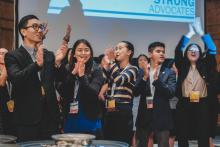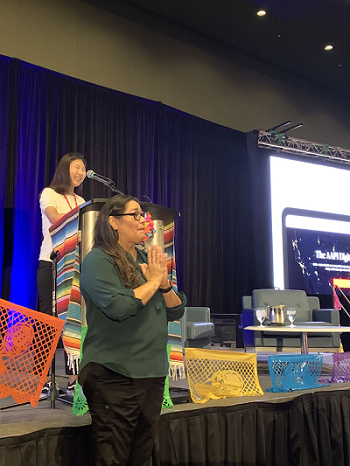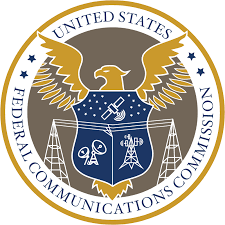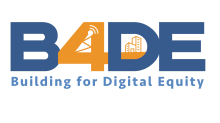
During the COVID-19 lockdown in 2020, organizations that had not previously focused on digital inclusion work scrambled to help their communities stay connected as school, healthcare, and other services transitioned online.
OCA-Asian Pacific American Advocates (OCA) was one of these organizations, and in advocating for the digital access needs of Asian Americans, Native Hawaiians, and Pacific Islanders (AANHPIs), found that there was not much data documenting connectivity gaps within these communities. The "model minority" myth, which characterizes AANHPIs as one monolithic group, enjoying “uniform high achievement and high income, [and] relatively untouched by racial and ethnic discrimination,” obscures the digital access gaps in many AANHPI communities and has likely contributed to the dearth of research investigating AANHPI connectivity needs.
OCA Broadband Access and Digital Equity Fellow Yen Jeong told ILSR how difficult it has been to challenge the model minority myth: “Every time we say that our communities need more [digital access] support, everyone says that Asian Americans are digitally already very fluent,” Jeong said, adding that the assumption that many AANHPIs have tech jobs makes it especially difficult for OCA to galvanize support for the AANHPI-focused digital inclusion work.
"It’s been really tough to challenge the narrative."
The assumption that all AANHPIs are connected to the Internet, along with the lack of evidence to break down this assumption, impeded OCA’s efforts to rally support for AANHPIs’ digital access needs, made urgent by the pandemic. Motivated to get all AANHPIs online, OCA launched a major data collection campaign to challenge the model minority narrative and build the foundation for its newest area of advocacy – technology, workforce, and digital inclusion.
OCA’s Entry to Digital Inclusion
OCA-Asian Pacific American Advocates is a national, community-based membership organization and the second oldest national civil rights organization advocating for AANHPI communities in the United States. Founded in 1973 as the Organization of Chinese Americans (OCA), the group sought to “create a unified voice for Chinese Americans in the civil rights movement.”

The organization changed its name to OCA-Asian Pacific American Advocates in 2013 to reflect its advocacy of a larger and more diverse set of communities. Today, OCA has over 50 chapters and affiliates across the country. The organization’s policy and advocacy initiatives include education, civic engagement, immigration, and racial equity and inclusion. In the wake of the pandemic, digital inclusion was added to its portfolio of advocacy work.
During the lockdown, OCA reached out to Asian American and Native American Pacific Islander-serving schools to gauge the needs of their students. They found that many did not have digital devices and/or at-home connectivity, and were struggling with remote learning, with some students unable to graduate because they did not have laptops to keep up with school work.
This led to OCA partnering with The Walmart Foundation to distribute hundreds of laptops to students affiliated with AANHPI-serving institutions.

Despite observing significant need for digital inclusion work among its members and communities, OCA found that potential supporters wanted to see data to substantiate the effects of the digital divide on the AANHPI community. Existing research has failed to break down the model minority myth and represent AANHPI connectivity needs with appropriate complexity, and because of this undermines OCA’s digital access advocacy work.
Yen cited data released by Pew Research Center, which reported that “English-speaking Asian-Americans are the most likely to report Internet usage,” at 97 percent in 2014. This rate of connectivity was the highest among the race/ethnicity groups reported.
A 2020 report by the AAPI Civic Engagement Fund & UCLA Center for Neighborhood Knowledge, however, notes that surveys measuring digital access among AANHPIs are limited and “often focus on a particular ethnic group (e.g., ones with the largest population), geography (e.g., locations with large numbers of AAPI), or language group (e.g., English speaking).”
These data reporting patterns erase the diversity of connectivity needs that exists within the AANHPI community. Yen said of the Pew data:
"It was very shocking and really not helpful, when we’re trying to do fundraising and any kind of outreach."
That same report points to a statistic from the 2017 American Community Survey, which represents Asian Americans as having the best rates of connectivity among all races/ethnicities, with 92 percent having access to both broadband and a computer. Only 82 percent of Pacific Islanders, however, reported having access to both. Studies that aggregate AANHPIs or exclude subsets offer the impression that the whole AANHPI community is already well-connected, which OCA knows is not true.
The Digital Access Survey
To document the need for AANHPI-specific digital inclusion efforts, OCA created the Digital Access Survey, which asks participants what devices they own and how they connect to the Internet, among other demographic and geographic information.
The survey is available in English and 11 other AANHPI languages to ensure that it is accessible to as many as possible. Data will be disaggregated by language and ethnicity, and will be available at state and zip code levels. Over 8,300 responses had been submitted by early April, and about 3,500 of these were completed in languages other than English. The survey is now closed, and findings will be published in September.

Even before all results were in, however, Yen was able to highlight several insights. The results showed that at least 15 percent of respondents connect to the Internet only through a mobile phone or hotspot, which means they don’t have a home Internet connection.
The survey also found that some percentage of respondents do not have access to any kind of connectivity, meaning they must visit libraries, fast food restaurants, or other public places to connect. So far, the survey is demonstrating more connectivity gaps among AANHPIs than previous data has reflected.
The survey findings will allow communities to understand their own digital access gaps, and will also serve as a data foundation to guide incoming federal dollars. OCA wants to ensure that AANHPIs are included in digital equity efforts, and that the distribution of funding reflects the connectivity challenges among AANHPIs. The survey will also lay out connectivity differences among ethnicities within the larger AANHPI population, and illuminate which digital inclusion services and materials are needed where, and in what languages.
Strengthening Advocacy Efforts Across the Country
Though conducting the survey has been a major feat, OCA’s digital access advocacy work extends beyond data collection, and into translation of materials.
Yen explained that though ISPs sometimes claim to offer services in multiple languages over the phone, callers often have to go through an English menu before reaching those services, which serves as a significant barrier. Non-English materials are extremely challenging for folks to navigate to, and these materials are often riddled with translation errors that make comprehension difficult.

Yen Jeong speaks Korean and has noticed spacing issues among Korean-translated materials that make the text nearly impossible to read. She also noted that though there are translated materials associated with the FCC’s Affordable Connectivity Program (ACP), they are written in a formal and outdated style that is not appropriate for the context and audience.
Through its various chapters, OCA is now advancing competently-translated materials to support broadband adoption and digital equity. Chapter members and presidents are multilingual and translate OCA’s published materials so that everyone in their communities can understand the resources.
OCA is also part of the Asian American Tech Table, and along with the two other organizations that comprise this group – the National Council of Asian Pacific Americans and Asian Americans Advancing Justice - AAJC – will work directly with the FCC to review several of the Commission’s translated materials before they go public.
OCA has also been helping eligible AANHPI households enroll in the ACP. To do that, OCA had been relying on volunteers to do this work until the organization received an ACP outreach grant this past March. OCA will use the funding to hire four digital navigators, who will begin assisting with sign-ups this summer.

OCA was the only national AANHPI organization to receive funding during the first round of ACP outreach grants, and wants to help others receive dollars in the second round.
The organization is also looking to create a toolkit outlining its successful grant-seeking process so that similar advocacy groups can follow suit, especially those hesitant to dive into digital equity work without previous experience.
Yen understands this hesitation. She expressed what she described as feelings of “imposter syndrome,” as OCA – an organization new to digital inclusion – works to address the digital divide in AANHPI communities. She suspects that other organizations feel this same way, and wants to lay out a pathway for groups that are not explicitly focused on digital inclusion to engage with and receive support for this critical work.
Building From the Ground Up
Trusted advocacy organizations like OCA, which are deeply rooted in the communities they serve, are excellent candidates for furthering digital inclusion work, even if they are not already involved. These trusted institutions have existing relationships with community members, and because of this are especially well-positioned to offer services and support and get people connected.
At this year’s Net Inclusion Conference, hosted annually by the National Digital Inclusion Alliance, the organization’s executive director, Angela Siefer, underscored the importance of quality, robust data and stories to fold in industries and sectors of society who aren’t yet involved in bridging the digital divide, or who don’t see their stake in fight.
OCA’s efforts, both to build a data foundation for AANHPI advocacy by illuminating connectivity needs, and to serve as a model for receiving digital equity-related federal funding to motivate others to get involved, serve as important groundwork for ensuring that all AANHPIs have the connectivity they need to fully participate in society.
Header image of OCA convention courtesy of OCA-Asian Pacific American Advocates
Inline image of OCA members in front of U.S. Supreme Court courtesy of OCA-Asian Pacific American Advocates
Inline image of Yen Jeong speaking at Net Inclusion 2023 courtesy of Yen Jeong






